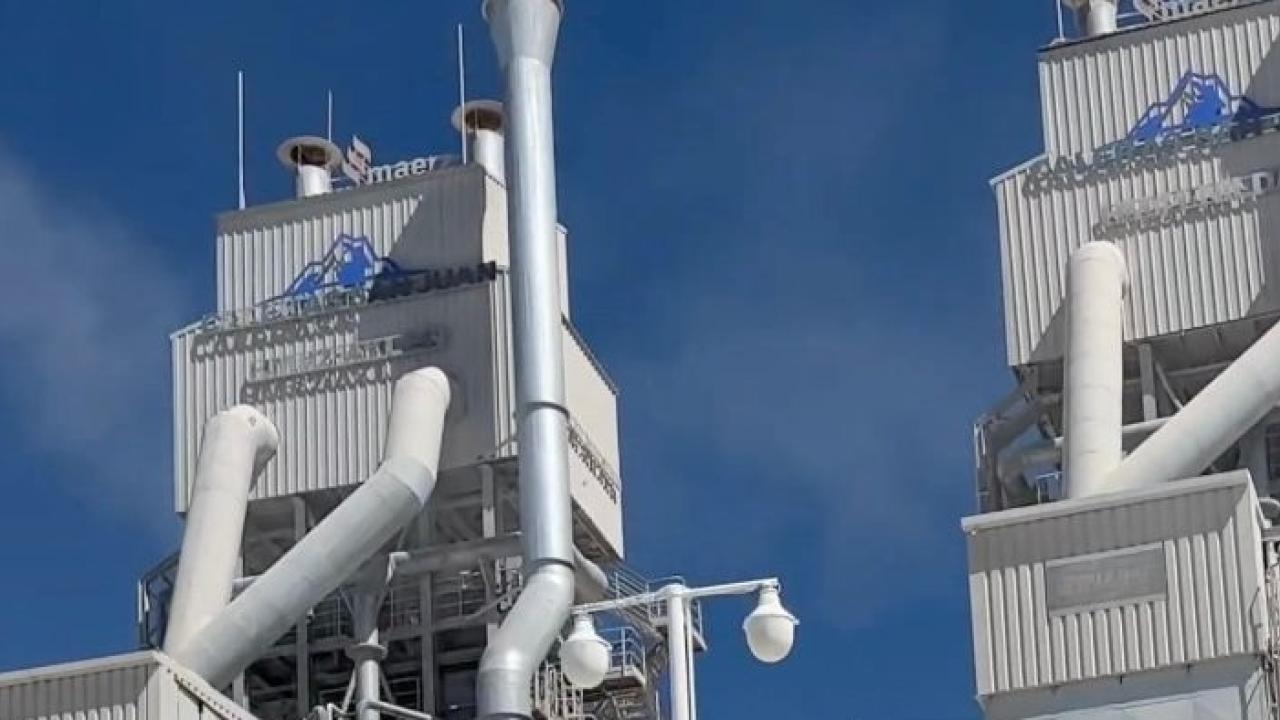
The material is used intensively for the production and refinement of the red metal, but some studies suggest that local production will end in 2028 and Chile will depend on imports from that year on. This shortage will not affect Peru or Colombia, the other copper producers in Latin America.
Another bad news for Chilean copper. By 2028 the demand for lime would grow to such an extent that the local industry would not be able to respond. That would force this product to be imported from China, where almost 70% of world production is generated, increasing the production prices of the red metal.
Lime, or calcium oxide, is a strategic –and economic– reagent for the sulfide copper extraction process. Without it, the process cannot occur successfully.
The lime business in Chile represents more than US$157 million for mining, with two companies generating most of what is used in the sector.
“We detected that there would be a significant deficit [of lime] by 2028, of more or less one million tons,” explains Guillermo Coloma, general manager of Coloma Consultores .
According to data from the Chilean Copper Commission (Cochilco), in 2016 there already was a reduction of almost 2,000 tons for lime consumption in the 2016-2025 period, ensuring its availability until at least 2022.
In any case, the government entity did not confirm to AméricaEconomía that it had detected a local production deficit.
“What is happening with national copper production in Chile is worrying, it has been a long time since the expected production projections that Cochilco has calculated have been reached (…) to present date, production should be above 6 million tons and it has not been like that,” says Coloma.
“From then on, the supply will depend on the development of domestic mining projects and a strategy to meet the growing demand,” indicates the study 'Critical Supply Market for Copper Mining', carried out by Cochilco in 2016.
And that is where the concerns of the Chilean lime sector arise.
"The current deposits have already been exploited for more than 50 years, which means that they are being exhausted. Two tons of limestone are required to obtain one ton of lime, so investing in equipment to produce lime economically is increasingly risky," explains Coloma, one of the organizers of the Expocal 2024 event, which will take place in Chile on May 6.
This does not mean that there are no reserves of this type to continue producing limes like the one currently used, but experts in the sector see difficulties, due to the need for greater investment for deposits that are increasingly smaller.
This is because in Chile no deposits of high-quality sedimentary rocks have been found so far, with the exception of the Guarello Island, used by the Huachipato steel company and which faces some limitations for extraction.
GROWING IMPORTS
The global lime market size was valued at US$36 billion in 2022 and will reach US$68 billion in 2028, with a CAGR of 10.98%.
More than 430 million tons of lime are produced in the world. China is the main producer, with about 72% of global share, so Chile can turn to the Asian country in search for supply alternatives.
In fact, during 2015, quicklime imports in Chile reached close to 400,000 tons.
The issue is that the value of lime imports has risen continuously since 2009, increasing by 63% in 2016, the year of the study, as per Cochilco.
But there are other drawbacks
“Lime is a dangerous, corrosive substance that requires special care for its transport. In ports, it is considered IMO 8 (corrosive material class 8), so it has very specific requirements in storage and controlled warehousing. In countries like Peru, Bolivia and Chile, its quantities are strictly controlled by the government --as it is a precursor for the production of drugs-- which implies permits and legal deadlines that must be considered before reaching the end user,” details the expert from Coloma Consultores.
Although all of this problem is known to users, it is usually forgotten until something like what happened in 2021 occurs, when an unforeseen failure affected Chilean lime production for several months.
For now, lime replacement is possible but much more expensive. There are alternatives for recovering copper by leaching sulfides through acidic or bacterial means.
“Plan B has to be strategically defined by each user to ensure their lime supply. That Chile has a shortage of national lime production benefits neighboring countries such as Bolivia, Argentina and Peru. All of them have exported lime for Chilean mining,” says Coloma.










